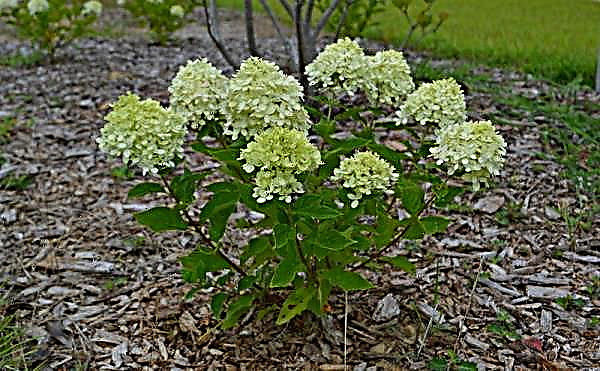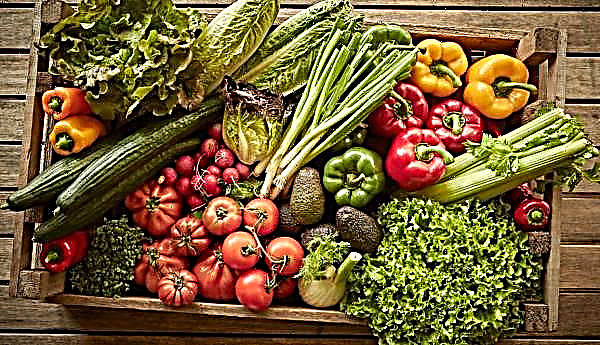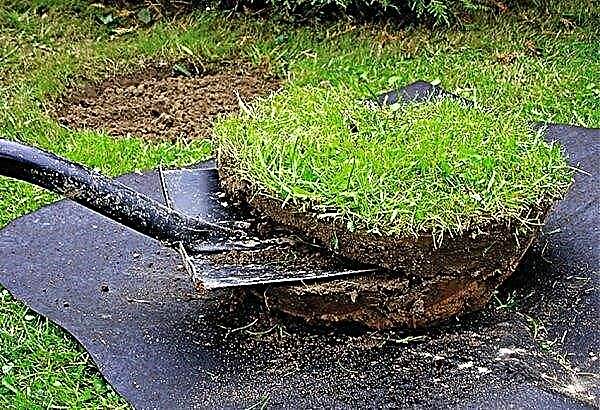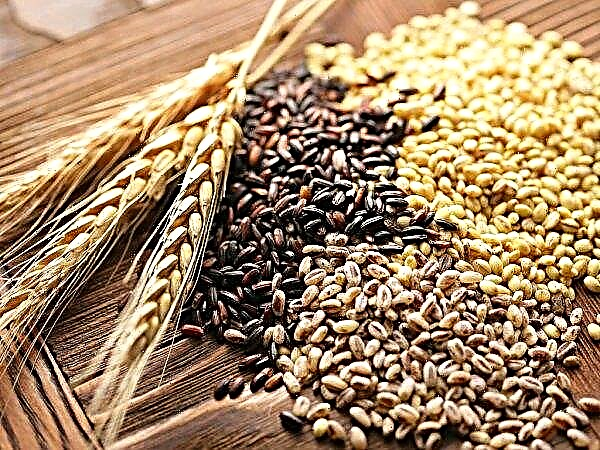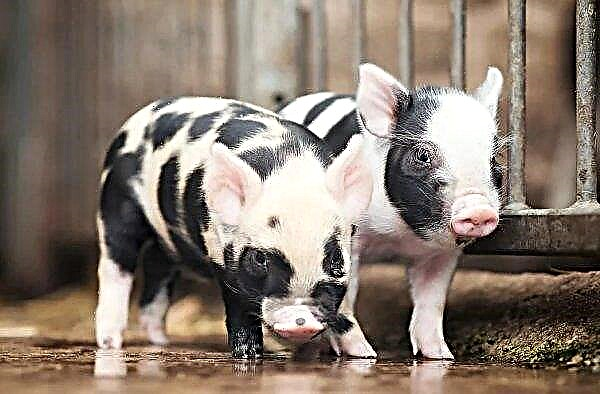Asparagus beans are an excellent alternative to ordinary beans, because its fruits are much more tender and tastier. The process of growing this variety of culture can not be called too complicated, but you need to know in advance about some of the nuances of planting and caring for the plant. Consider the requirements and characteristics of the most famous varieties of asparagus beans.
What is the difference between asparagus beans?
What is asparagus haricot is known to almost all avid gardeners, but at the same time, only a few can give a clear definition of the characteristics of a given crop. Unlike ordinary varieties, asparagus pods are devoid of coarse fibers between the cusps and the parchment layer lining their inside. This feature allows you to eat them whole without peeling the beans, so the variety is appreciated in the circle of gardeners.
The composition of the fruits of the culture contains many important elements, including proteins, group B vitamins and beta-carotene. Asparagus beans are an excellent component of the diet menu because they remove unnecessary fluid from the body. The color of the pods varies depending on the variety and can be either white or bright yellow, or brown or even green.
Bean planting
It can be planted in any type of soil, and sometimes it is even sown in flower pots for cultivation on the balcony. Of course, in order to have a good harvest of beans, you have to create suitable conditions for the bushes for growth and provide appropriate care. Therefore, before moving on to planting a crop, it is important to consider the following nuances.
Growing asparagus beans in a greenhouse and at home
Sowing seeds in a greenhouse shelter will allow you to collect an early crop of beans, though for this it is still better to choose the appropriate early varieties of plants. So that neighboring climbing plants do not get tangled, there should be no more than three to four bushes per 1 m² of territory. In addition, seeds can also be sown in vacated holes from seedlings of pepper or tomatoes, and they will quickly grow and, possibly, even overtake bushes at the main plantings, bearing fruit in the shortest possible time.
Did you know? The leaders in eating beans are considered British. As for the asparagus variety, it is more often found in the national cuisine of Italians, Mexicans and Greeks.
Considering that the substrate in the greenhouse is almost always well-fertilized with nutrient compositions, the asparagus beans will branch, which means that you will have to manually break off the lateral processes to a height of 70–80 cm, and pinch all subsequent ones after the first inflorescence. Between the rows you need to leave 40-60 cm of free space, which will provide air exchange and prevent decay of the bushes. In greenhouse conditions, the first shoots appear in 7-10 days. For planting a house (on a balcony or in a room), it is better to choose bush varieties that do not have to constantly limit growth. For such plants, average planting containers (individual pots or vegetable containers) filled with a fertile and loose substrate are suitable. To prepare it, two parts of the earth must be mixed with one part of humus.
For planting a house (on a balcony or in a room), it is better to choose bush varieties that do not have to constantly limit growth. For such plants, average planting containers (individual pots or vegetable containers) filled with a fertile and loose substrate are suitable. To prepare it, two parts of the earth must be mixed with one part of humus.
Important! To increase the likelihood of plant germination, plant not one, but two bean fruits in each well at once, after emergence of young sprouts of the planting, you can thin out.
The process of planting asparagus beans in closed soil does not differ from sowing in open ground, so you need to perform the following steps:
- Soak the planting material in a solution of potassium permanganate and prepare the appropriate substrate.
- Moisten the soil and deepen the seeds into it by about 5 cm, leaving at least 20 cm of free space between the plants (for climbing varieties this distance can be increased by another 10 cm).
- Sprinkle the planting material with soil and provide it with temperature conditions in the range + 18 ... + 20 ° C.
Features of growing bush and climbing beans
Bush forms of asparagus beans are not characterized by such rapid growth as curly varieties, so they are more often used for home growing. If you decide to plant plants with long, curly stems, then think about an appropriate support. Beans planted on the balcony fit perfectly into the interior and creates a pleasant partial shade on hot summer days. It is better not to grow it on window sills, otherwise it will significantly limit the luminous flux, and twilight will reign in the room. As for containers for climbing varieties, these should be products with a volume of at least 3 liters, while for bush forms, smaller pots are sufficient, provided that you plant the plants one at a time. Otherwise, landing and care activities do not have significant differences.
As for containers for climbing varieties, these should be products with a volume of at least 3 liters, while for bush forms, smaller pots are sufficient, provided that you plant the plants one at a time. Otherwise, landing and care activities do not have significant differences.
Care for Asparagus Beans
After planting bean seeds, regardless of the variety of culture, they need proper care, which includes regular moistening of the substrate, periodic feeding and the implementation of preventive measures to prevent the development of diseases. Consider the features of each process.
Watering and loosening the soil
Until the buds appear on the seedlings, you need to moisten the soil regularly, but not more than once every 7 days (it should not dry out much). After the appearance of several true leaves on the beans, watering is not carried out, and the introduction of liquid is resumed only during the flowering period, increasing the frequency to two times a week. The first loosening of the soil is performed only after the sprouts grow to 6–7 cm, and the second, 14 days after the first, combining loosening the soil with its hilling. The last time the soil is loosened before pulling out bean bushes.
The first loosening of the soil is performed only after the sprouts grow to 6–7 cm, and the second, 14 days after the first, combining loosening the soil with its hilling. The last time the soil is loosened before pulling out bean bushes.
Fertilizer and fertilizing
The first time the introduction of nutrients is performed after the appearance of the first true leaves on the seedlings, and 30–40 g of superphosphate per 1 m² of plantations is suitable for the role of the nutritional composition. After the appearance of the buds, the procedure can be repeated, but this time by mixing with the soil 10 g of potassium salt. During the ripening of the fruits, a solution of wood ash is suitable for feeding the earth.
Important! It is better not to use nitrogen-containing mixtures when caring for beans, since the beans themselves produce this substance. With its excessive quantity, the yield will be small, but the green mass will be abundant.
Prevention of Bean Diseases and Pests
More often, plantations fall ill with downy mildew, bacteriosis and anthracnosis, and to prevent them, it is important to strictly follow the care requirements. If the beans were planted in too acidic soil, it should be supplemented with limestone, which will make the soil composition more neutral. Planting stock should always be disinfected in a potassium permanganate solution, and the prepared substrate should be calcined in the oven, which will reduce the likelihood of infection by the fungal spores stored in them. In the future, copper-containing preparations will help protect the plantings from viral or fungal infections. To protect plants from slugs that often live on bean plantings, regularly remove weeds and keep the soil slightly moist (the ground should not crack).
In the future, copper-containing preparations will help protect the plantings from viral or fungal infections. To protect plants from slugs that often live on bean plantings, regularly remove weeds and keep the soil slightly moist (the ground should not crack).
Harvesting and storage
The first fruits of asparagus beans can be tasted 14 days after the appearance of the first ovaries on the bushes. The size of one pod at this time is 15–22 cm, but the longer it stays on the bush, the larger it becomes. Only young fruits have an ideal taste, so harvesting should be done as often as possible, which eliminates the possibility of hardening of the pods.
For storage of beans, a cool dark place like a cellar or basement is suitable, where it is placed spread out on a clean tray in one layer. In green form, it will be stored for no longer than two weeks, after which it will begin to grow coarse and yellow. To increase the shelf life, the fruits are frozen.
Best Asparagus Beans
Today there are many varieties of asparagus beans, each of which can bring a large crop of delicious green fruits. Consider the most famous variants of such plants.
Haricot asparagus the Snow Maiden
The snow maiden is a representative of the climbing species, has an early ripening period, since only 50 days pass from the appearance of the first shoots to the beginning of active fruiting. The bushes of the plant are compact, do not exceed 40 cm in height. There are few leaves, but their lack is fully compensated by a large number of pods with light yellow beans. All pods are slightly curved and do not have parchment fiber, and grow up to 17 cm in length (with a width of 1.2 cm). About 1 kg of legumes are usually harvested from 1 m² of plantings.
Crane
Another representative of early ripe asparagus beans. As in the previous case, the bushes of the plant do not exceed 50 cm in height, so that they can be planted at home. Bean pods are green, fiberless, tasteful and grow up to 12 cm in length. Sunflower seeds are green. With 1 m², you can collect about 1.5 kg of crop, which is great for further freezing or preservation.
Libra
The variety has an average ripening period, since about 65 days pass from the appearance of the first seedlings to the achievement of the technical maturity of the plant. The height of the bean bush does not exceed half a meter height, and the pods reach a length of 11-14 cm (with a width of 9 mm). They are all green and quite fleshy, with white seeds inside. Libra is suitable for fresh consumption or preparation of preservation.
Beans Asparagus Signa
Compared with previous varieties, Vigna is more whimsical in terms of care, but the external data of the bushes can make them a real decoration for any site. When constructing a suitable support, such curly beans can cover unattractive sections of buildings or complement the appearance of the arbor, especially considering the possibility of growing up to three meters in height.
Important! You can recognize this variety of beans by the characteristic dark spot on the side of the bean.
A characteristic feature of Vigna is predominantly night flowering with saturated purple flowers. In the daytime, the buds are closed and change their color to yellow-brown. From each bush, 200 green pods with white beans inside are collected. They can be cooked fresh, or canned or frozen.
Gerda
A winding variety that ripens early - about 50 days after germination. Shoots can reach three meters in length, the pods are straight, soft and juicy, 20-30 cm long. Rounded bean fruits are inside, and the parchment layer and fibers are traditionally absent. Productivity of the variety is 3.5–4.0 kg / 1 m². Use fruits for any culinary purposes, with proper heat treatment, the pods retain their usual color.
Fatima
The medium early variety of asparagus fatima Fatima is a climbing plant, with shoots no longer than 3 m long. All of them are medium-leafy, with a lot of straight, pale green pods, up to 21 cm long. Inside them are from 4 to 10 grains, delicate in taste. On average, up to 3.5 kg of crop can be harvested from 1 m² of square plantings, which is subsequently suitable for use in almost any culinary purpose: both for preparing dishes from fresh fruits and for their preservation for the winter.
Laura
A medium-early variety that yields a crop somewhere on the 50th day after the appearance of the first seedlings. The bush of the plant is compact, not higher than 42 cm. The shoulder blades of the pods are fleshy, golden yellow in color and up to 11–13 cm long. The seeds are usually white and there is no septum between them. From 1 m² of plantations, up to 2 kg of the crop is harvested, valuable in high protein, sugars, B vitamins and vitamin A. In addition, a considerable amount of mineral salts is hidden in these beans. Ripe beans can be used both for fresh use and for the preparation of blanks. It is not difficult to grow it from seeds even in room conditions, in the presence of a suitable planting capacity (with a volume of at least 3 l).
Matilda
The variety belongs to the mid-early group, that is, it will be possible to taste the fruits 65 days after emergence. Matilda Beans is a climbing plant, so it is recommended to grow it using supports. The length of the shoots reaches three meters, and the beans forming on them have a length of 20 cm. All of them are straight, purple in color, without a fibrous structure inside. At the stage of full ripeness, the internal grains have a beige color. Under standard growing conditions, at least 3.2–3.5 kg of fruits are harvested from 1 m².
Sax 615
An early ripe variety of asparagus beans Saks belongs to bush varieties up to 40 cm high. The pods of the plant are green in color, slightly curved, about 12 cm long. Inside the blades are elongated grains, greenish-yellow in color, which have a delicate sweetish taste. One of the main advantages of the variety is its good resistance to anthracnosis and bacteriosis, and as for the type of use, this bean is suitable for steaming or freezing with further use in diet food.
Curly bean purple lady
Despite the fact that the variety belongs to climbing plants, the length of its shoots is not as impressive as in some previous versions, and more often does not exceed 150 cm. The highlight of the asparagus beans Purple lady is the formation of large, dark purple flowers that give her decorativeness. The fruits of the bush are long pods, at least 15 cm each. Outwardly, they resemble small tubes with white beans inside.
Did you know? Beans are an excellent remedy for depression, which is explained by the presence in its composition of such components as tyrosine and methionine.
The first crop can be harvested 55-60 days after emergence, which allows the plant to be attributed to the group of early ripe varieties. From 1 m², up to 2 kg of fruit is usually harvested. According to the reviews of summer residents who cultivated different varieties of asparagus beans, they all deserve attention. Some varieties are suitable for cultivation in open ground, others bear fruit better in greenhouse conditions, but in any case, the ripened fruits will have a delicate and mild flavor, allowing them to be used for any culinary purposes. With a little effort, you will definitely get a rich, tasty and healthy harvest.
Some varieties are suitable for cultivation in open ground, others bear fruit better in greenhouse conditions, but in any case, the ripened fruits will have a delicate and mild flavor, allowing them to be used for any culinary purposes. With a little effort, you will definitely get a rich, tasty and healthy harvest.

